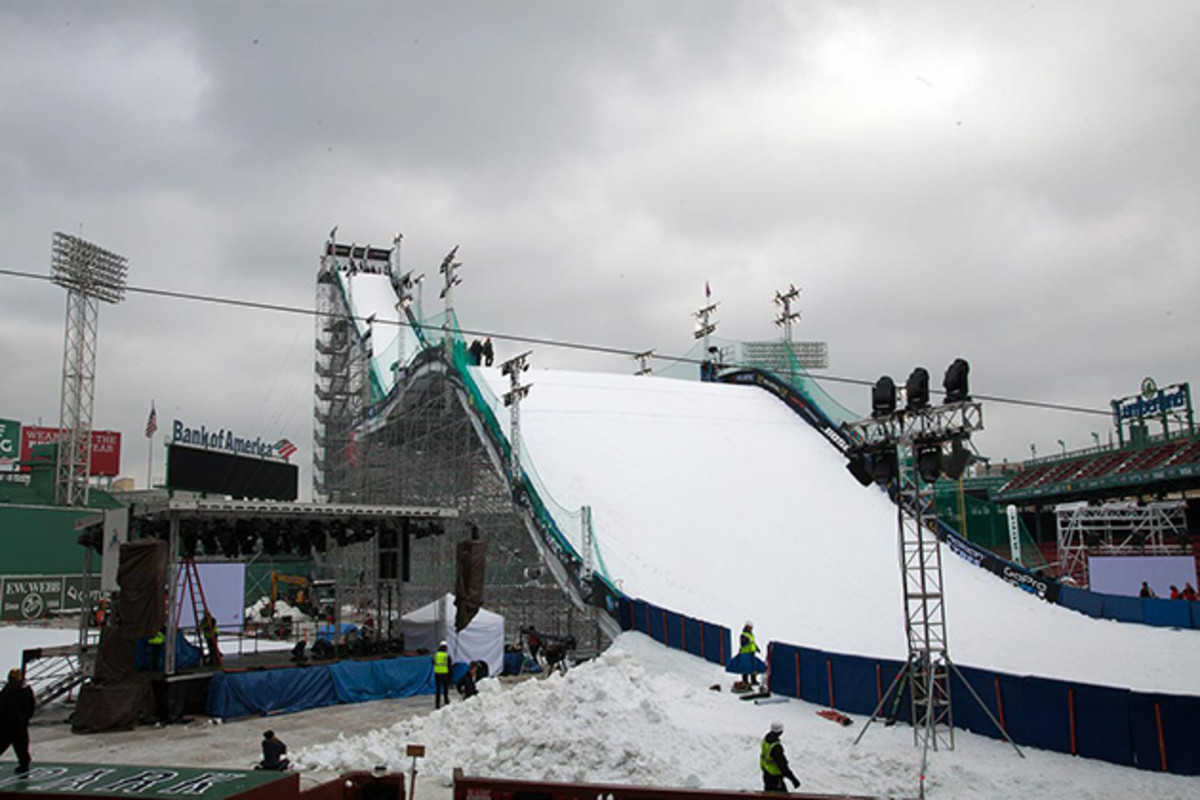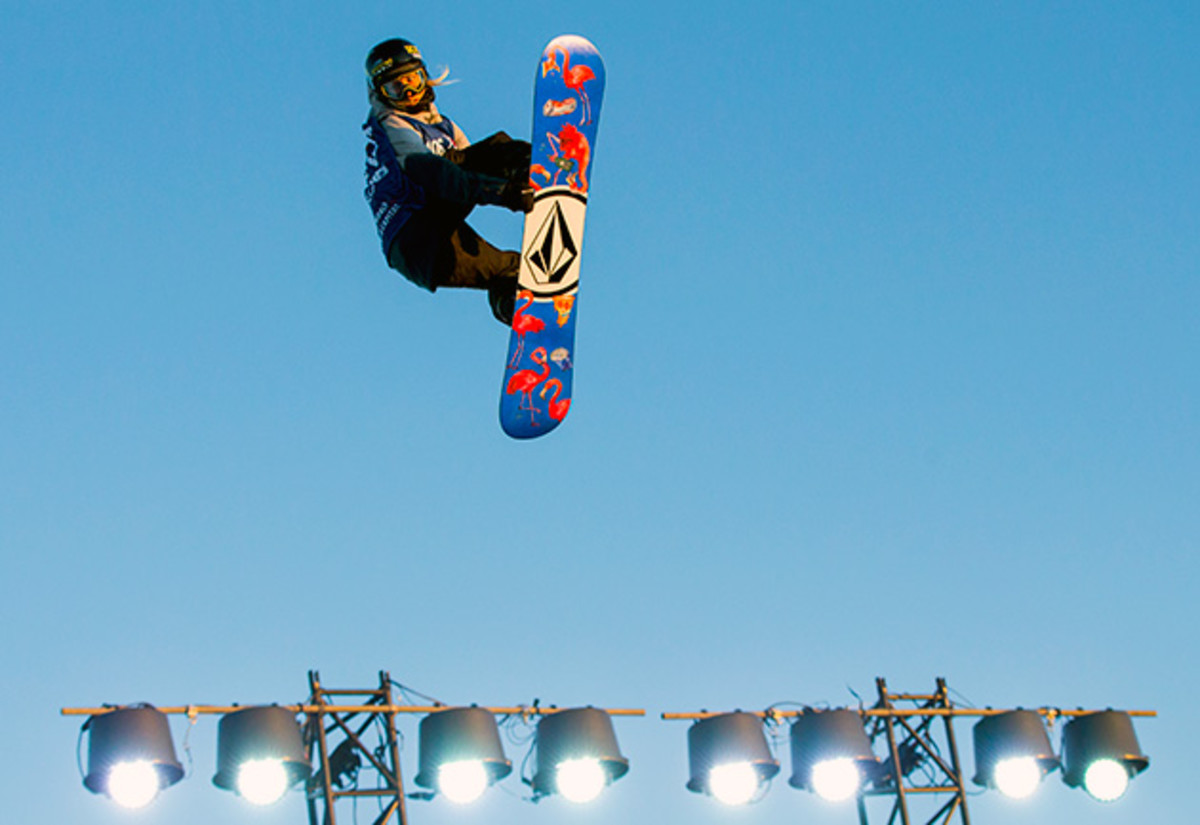Raising their game: Why women snowboarders need their own Big Air

Late last month, Christy Prior looked out onto the Norwegian capitol city of Oslo, marveling at the view of the city as much as at the scaffold-based jump, the site of the first women’s Big Air contest in an X Games competition in 15 years. Prior, having never hit a man-made jump before, came into the competition fully aware that she was throwing her safe trick, the Frontside 720 melon grab, and taking whatever place that earned her. Oslo wasn’t the time to be adventurous.
“I knew I was going to do that trick no matter what any of the other ladies were throwing. It's one of my most comfortable tricks and I knew the scaffold jump was going to be unlike anything I had ever hit before,” Prior says. “I wanted to use this first Big Air as a learning experience, everything is different. I'm stoked with my decision; it made for a really safe and enjoyable learning experience, the silver was just a bonus!”
Indeed, in the competition on Feb. 27, the New Zealand native’s 720 melon proved good enough for second place, behind only Oslo native Cheryl Maas’s backside 900 Tail Grab. Prior’s conservative approach to the event in general and the relatively subdued nature of the tricks displayed in competition overall speak to one of the great inequalities in the winter action sports world: the lack of women’s Big Air. The event is credited with helping the guys take massive steps in their own riding over the past decade, but has worn a “no girls allowed” sign since the early 2000s.
Gear Guide: Everything you need for the ultimate snowboarding adventure
. When the games relocated to Aspen in 2002 Big Air, which had been open to both genders since 1999, was lost in the transition. At that point, the gulf between the technical level of tricks between the genders was one rotation. Nobody was flipping yet.
The Big Air event returned to the Winter X Games in 2008. The men’s snowboard Big Air was reinstated and men’s ski Big Air was introduced for the first time. However, there was no such event established for the women. The first iteration of Big Air was a snowboard only event; female skiers had never known it, but female snowboarders who might have been excited to get the event back were disappointed.
“When I originally heard it was coming back, as a Slopestyle rider, I was excited for it,” said Maas, who was competing in her fourth X Games in 2008 and won Big Air Gold at Oslo. “Then it turned out to be just for the guys, and that was a bit of a bummer.”
It turned out to be much more than just a bummer. The decision proved costly in terms of the progression in women’s skiing and snowboarding. Three years after the Big Air event was reinstated, X Games rookie Torstein Horgmo won the 2011 snowboard event with the first-ever triplecork, a move that combines spinning with three flips of the snowboard. Two years later, Stale Sandbech and Seppe Smits, Mark McMorris and Torstein Horgmo all brought down triplecorks in the 2013 final, setting off the arms race of technical snowboarding that now dominates the sport.
“That was definitely a big year in terms of the direction of progression in snowboarding,” Sandbech says. “That was really when everything changed in terms of the level of tricks you needed to compete.”

in terms of the standard of difficulty required to make the podium.
“When Henrik [Harlaut] landed his triple 1620 in competition, that was all the validation anyone needed that it could be done,” U.S. freeskier Bobby Brown says. “After that, it was just a matter of going for it.
In the world of action sports, progression is the name of the game. If a rider wins a competition with a trick that is of a higher level than anything shown by the rest of the field, the field has no choice but to acquire some variation of the trick. Harlaut landed the first Triplecork on skis in 2013. The 2015 X Games ski Big Air final featured attempted triplecorks from every competitor in the field. Those attempts yielded big scores and equally big falls but, most important, the competition showed major steps forward in terms of the technical potential of the male skiers. In eight seasons since the inception of their Big Air event, skiers had closed the gap on the snowboarders.
Snowboarding superstar Danny Davis marvels at the ride of his life
But for a decade and a half, female Big Air riders and skiers were left out in the cold.
“Big Air events are where you’ve seen a lot of progression out of the guys, then they would incorporate those tricks into Slopestyle events. I think we are going to see similar things with female snowboarding now,” Prior says. “Big air will make it a little easier to bust out that new trick you have been working on, as you don't have to keep it consistent and land all ’eight’ features in a row like Slopestyle, you can add a little more risk into the equation and only have to focus on one trick at a time.”
During the hiatus, the issue was overshadowed by the fact that women were able to participate in ski and snowboard Slopestyle events. The vast majority of riders and skiers favor Slopestyle to Big Air because it better displays one’s complete range of skills, but Prior is right in identifying the Big Air jump as the place where most of the progression we’ve seen in skiing and snowboarding has occured.
The 70-to-80-foot jumps that have graced the base of Buttermilk Mountain since 2008 aren’t easy to come by anywhere else in the world unless you’re having one built by a sponsor. Without their own Big Air event, the progression of women’s riding has been stunted by a lack of opportunity to attempt tricks that have never before been done. Slopestyle or not, the lack of women’s Big Air has not gone unnoticed. Several big names in women’s skiing and snowboarding have been pushing for the return of Big Air, and while they were included in Oslo, it hasn’t been decided yet whether the women will be included on a natural Buttermilk jump.
“I think we’ll do what we do with every X Games. We’ll get through this one, review, see where we are at and then move on to setting up the next one,” says Tim Reed, Vice President of the X Games in Aspen. “But there was clearly a lot of push for this to happen, and we want the ladies to know we do hear them.”

That vote of confidence aside, riders like Slopestyle queen Jamie Anderson have hatched plans to take matters into their own hands. In 2015, Anderson actually planned to crash the Big Air competition and take a run. Her plan was to do a Backside Rodeo or Frontside 720, the same trick that won Prior her silver in Oslo, but Anderson injured her ankle and in the end focused only on the events she was competing in.
“I’ve always thought it was absolute b.s.! I really was planning on shredding with all the boys and just kind of poaching it to make a stand for women’s shredding to say, ‘What the hell—we can hit big air too!’” Anderson says. “The jump looks fun. I’m going with all the boys. And there are plenty others who are with me on that.”
The onus to provide balanced opportunities within the events doesn’t just fall on the shoulders of the X Games. The FIS Snowboarding World Cup tour Big Air events were established in 2003, but excluded women until 2015, when Long Island native Ty Walker took home the first event win in Istanbul.
The SI Extra Newsletter Get the best of Sports Illustrated delivered right to your inbox
Subscribe
“Istanbul is going to go down as one of the most important moments of my career,” Walker says. “Not just because I won, but because the event itself was a win for women in action sports.”
The snowboard event at the 2018 Winter Olympic Games in South Korea will be open to men and women but not skiers of either gender; that’s the same format that Big Air adopted in 1999. Nearly 20 years later, the search for equality in Big Air might be coming to an end, but it’ll still be years before female skiers and snowboarders are able to close the gap on their male counterparts.
“Of course its going to take a few Big Air events just to get used to the new environment and different snowboarding conditions before people start really hucking their meat,” Christy Prior says, “But with practice, we will get more and more comfortable and really start pushing ourselves and the level of female snowboarding. The ladies are on a roll and there has been a massive spike in progression lately. It’s so exciting to be a part of it!”
